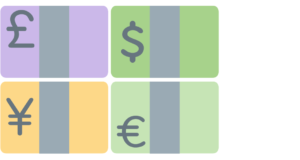During the July-September quarter, equity markets were volatile, but ultimately delivered positive returns. The MSCI World ex-Australia Index (Hedged into AUD) rose by 4.5% over the quarter. Key developments included:
- the US Federal Reserve’s decision to cut interest rates by 50bps in September. That decision followed slowing of the US inflation
- the Chinese government’s announcement of significant stimulus measures in September to support equity market returns
- inflation continuing downward, with US inflation moderating towards their 2% target and Euro area inflation falling to well within the ECB’s target range.

USA
In the USA, the S&P 500 rose by 5.9% over the quarter. This was largely due to the interest rate cuts and corporate earnings reports earlier in the quarter generally supporting the view that US economic activity remained resilient.

Europe
European equities performance was mixed over the quarter. The MSCI Europe Index (in Euros) was stronger in August but a little weaker in September. This Index returned 2% for the quarter. Euro area inflation moderated. It fell to 2.2% in August, and to 1.7% in September. The ECB eased interest rates by 25bps in September, due to falling inflation and weakening economic data.

Asia
In Asia, Japanese equities were very volatile. A drop in the markets in August was due primarily to a rapid unwind of the popular Japanese Yen carry trade.
Chinese equities were moderately positive in August and showed strength in September, boosted by government stimulus measures. Other Asian markets were mixed (Korean equities materially lagged broader indices).

Australia
The Australian equity market outperformed Developed Markets in July and September. The Australian equity market returned 4.1% in July and 3.1% in September. The S&P/ASX 300 Index returned 7.8% for the quarter. The Information Technology sector was a standout performer in August and September.
The Reserve Bank of Australia left the cash rate unchanged at 4.35% in both August and September, due to ongoing inflation concerns.

Currency and bonds
Both Australian and Global bonds delivered positive returns for the quarter. Australian bonds returned 3% and Global bonds returned 4%. Yields on major Developed Market bonds were generally lower, reflecting expectations that major Central Banks were likely to continue lowering rates.
Over the quarter, the 10-year Australian bond yield fell by 34 basis points to 3.97%, while the US 10-year yield decreased by 58 basis points to 3.79%.
In currency markets, the AUD strengthened against the USD (returning 3.9%), though was weaker against other major currencies, with the largest decrease against the Japanese Yen (-7.6%).
The USD has generally been weaker against most currencies recently, partially reflecting expectations for rate cuts in the US.

